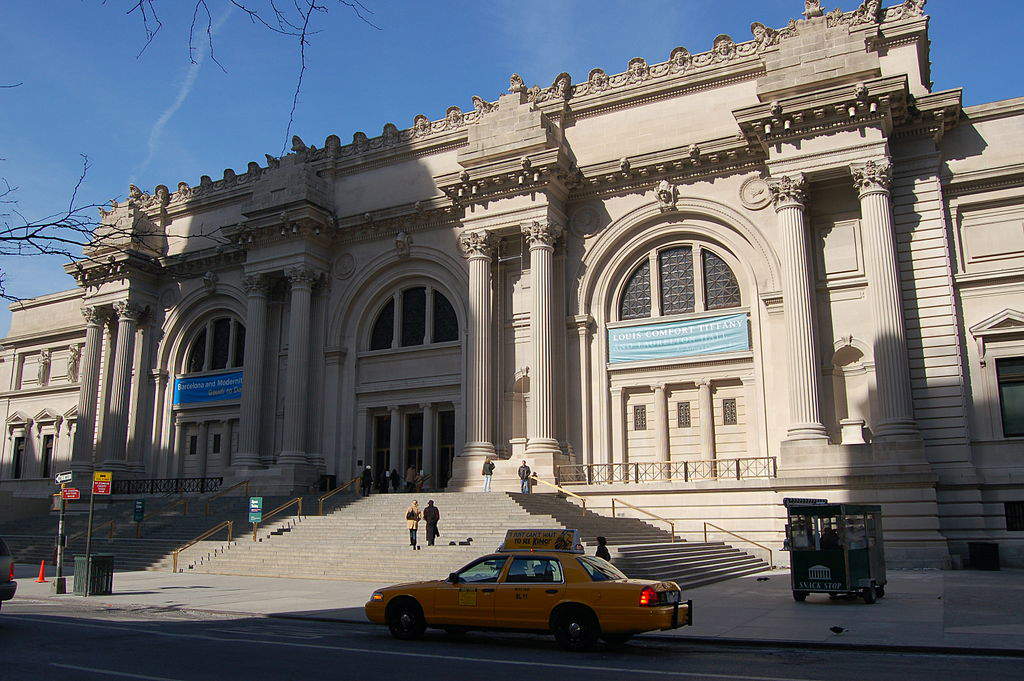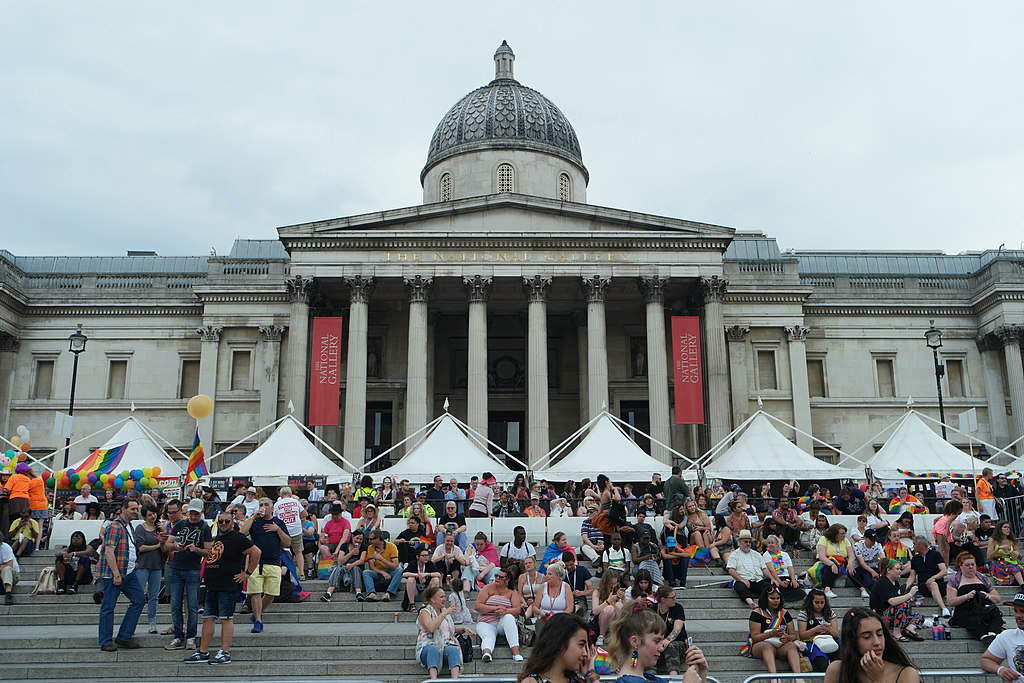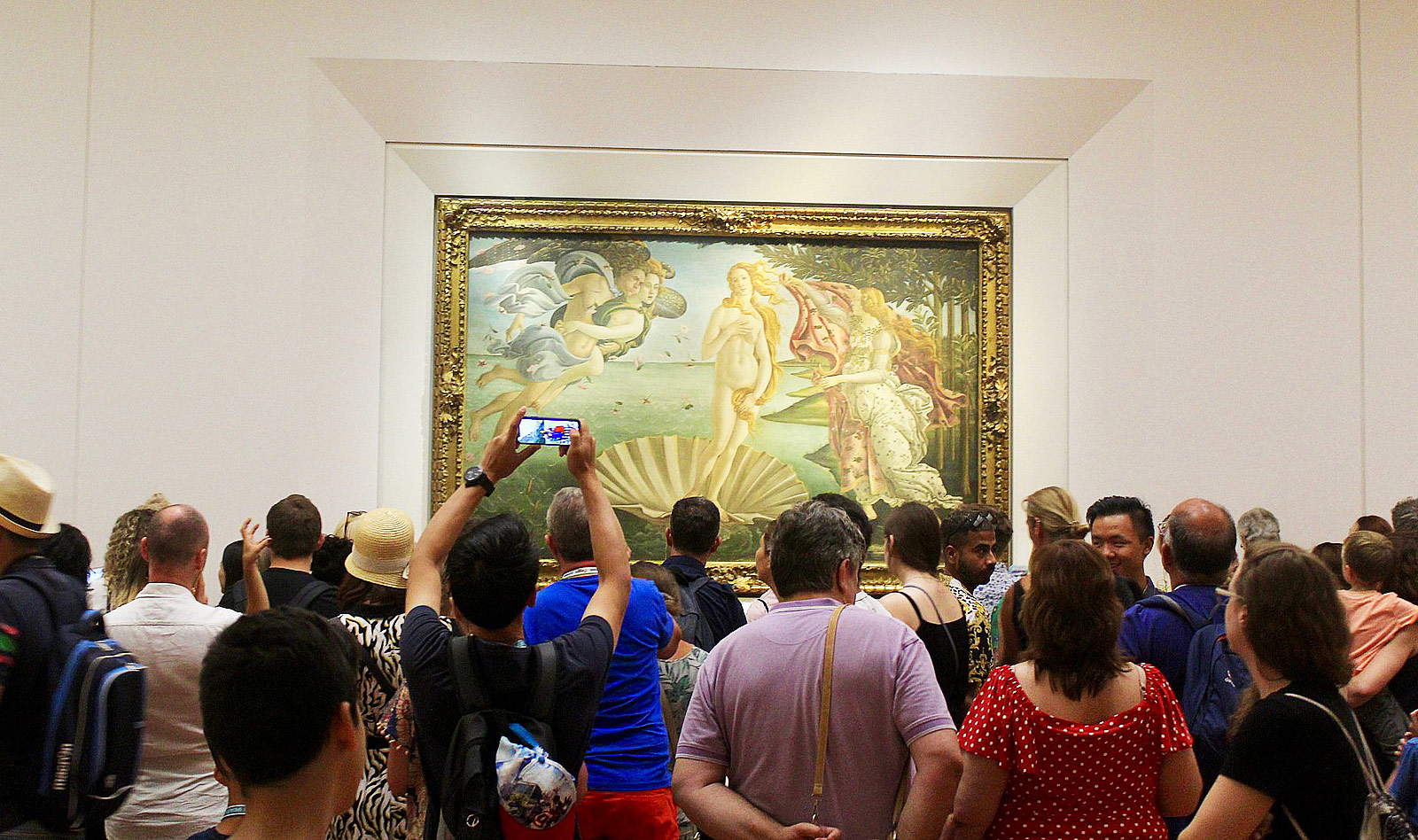State museums always free for everyone? We can't afford it (and we're not the only ones): here's why
In January 2018, the Metropolitan Museum in New York surprised the world by sanctioning the end of its decades-long admission policy, which provided free admission for all upon a free bid, and introducing a $25 admission fee for all visitors who were not residents of New York state (free admission remained unchanged for students, including residents of Connecticut and New Jersey), reduced to $17 for seniors and $12 for students. The measure, as the museum implied, had been prompted by the dramatic decline in proceeds from visitor offerings, which on average left nine dollars per visit: and while in 2004 63 percent of visitors matched an offering equal to the $25 now obligatory to enter, the figure had dropped to 17 percent in 2017. Not only that: an earlier study had estimated that the novelty would impact only 31 percent of visitors, and of this 31 percent, 80 percent were estimated to be tourists from overseas, whose travel spending was calculated to average $1,200 per person. The introduction of the ticket did not have disastrous effects: far from it. The only available data, referring to 2018, speak of an overall increase in visitors to the museum of 5 percent over the previous year, and $48 million generated by tickets. A figure that also benefited many other city institutions, since, in March, the museum announced that it would redistribute 2.8 million among 175 cultural organizations.
In the wake of the policy change adopted by the Metropolitan Museum, the debate has reignited in many countries about whether visitors should be charged a ticket to enter the museum. A discussion that, often, also returns to Italy, where there are many proponents of always free museums for all (among whom are, for example, Salvatore Settis, Vincenzo Trione, Vittorio Sgarbi, Tomaso Montanari), and where the arguments in favor of indiscriminate free admission are, roughly, always the same: the fact that libraries are also free and, in educational terms, museums are identical to libraries, the benefits on the total number of visitors that necessarily increases with free admission, the positive spillover effects on other museums or other cultural products (since the visitor who does not spend to enter a free museum can save his pocket change for other expenses), the possibility of reaching more citizens and thus cementing their sense of community and belonging (as well as consolidating their education). All very valid and noble reasons, but they must be weighed while also taking into account the costs and drawbacks.
 |
| Entrance to the Metropolitan Museum. Ph. Credit Rob Young |
It is necessary, meanwhile, to clear the air of a misunderstanding: the comparison between museums and libraries (on which former Uffizi director Antonio Natali, among others, has often insisted). Although museums and libraries contribute equally to the cultural growth of a community, it is necessary to point out the profound differences that separate them from the point of view of fruition: first of all, the fact that the museum offers an experience (and as such unique and irreproducible), while the library guarantees a service (therefore widespread and replicable, unless one wants to consult a medieval manuscript or a rare cinquecentina, activities however reserved for scholars and therefore negligible for the comparison between the two institutions). A museum is a collection of works that do not exist in other collections, while libraries are repositories of books usually printed in hundreds or thousands of copies. In other words: to see Botticelli’s Primavera, unless one is satisfied with a reproduction, it is mandatory to visit the Uffizi. The Decameron, on the other hand, can be borrowed from any library (and for books not available in one’s city library, there is almost always interlibrary loan). Not to mention the fact that, typically, museums, as opposed to libraries, attract tourists as well as citizens. These, we would argue, are the reasons why one usually pays to enter a museum, while one gets free access to borrowing in almost all libraries. Of course: one could object by replying that museums, just like libraries, are an important cultural presidium, fundamental to the education of citizens. So if free museums are to be talked about (of course, it is right that the museum should be opened free of charge to certain categories of users), it would make more sense if free admission were applied to those who are in the midst of their education or to those who study for work (students and scholars, regardless of their age), and to the categories for which the ministry currently already provides free admission.
Having loosened this knot, the main obstacle to extending free admission to all museums every day of the year is the high cost of the operation: because it is well known that if an asset is free, it means that there is someone paying to make it so. If the Ministry of Culture wanted to follow the model of the British national museums, thus making the opening of all its museums free of charge, it would have to reckon with a shortfall of 230 million euros (before the fee that accrues to the concessionaires of the services), a figure that represents little more than 10 percent of its budget: and beyond the naîf and populist propositions that are often advanced to cover the expense (Montanari, in 2018, wrote that “we could afford to open all state museums to everyone free of charge for 365 days a year simply by deciding not to spend on weapons for at least two days a year,” and he returned to this is proposal recently when presenting his document for the 5 Star Movement’s Future Team ), these are resources that need to be found elsewhere. The national museums across the Channel, for example, charge (very steeply by Italian standards, moreover) for an admission ticket to some temporary exhibitions: admission tickets to the National Gallery’s exhibitions on average cost around eighteen to twenty pounds (between twenty-one and twenty-four euros), and not dissimilar are the costs of visiting other museums’ exhibitions. The bizarre aspect of this decision lies in the fact that it is especially penalizing for return visitors and residents, those who are usually most interested in temporary exhibitions. Excluding, of course, blockbuster or high-attraction exhibitions, capable of attracting visitors also from outside: not surprisingly, often those who advocate the idea of always-free museums are convinced that, in order to make money following the British model, the choice of producing interesting exhibitions for a wide audience is almost obligatory (and, it would be added, hardly a blockbuster exhibition is also a real opportunity for scientific study). But the choice to focus on box-office events, in addition to being able to be practiced by only a very few players, risks proving anachronistic: in the future it will become increasingly difficult to organize large exhibitions of ancient art, and already several museums are thinking about how to find viable alternatives (we refer in this regard to the debate on the “museum of the future” in the December 2019 issue of our printed quarterly, in which several of the main players on the national and international scene participated).
In order to understand how the English model could be applied to a museum like the Uffizi Gallery (an absurd and impractical hypothesis, given the pressure the Florentine institution already suffers with ticketing), it is possible to make an albeit crude comparison with the National Gallery (crude, because the visitor flows are different, because the policies and opening hours are different, because the nature and conformation of the two institutions is totally different, and so on). Of the 5.9 million visitors who flocked to the National Gallery between March 2018 and March 2019, 510 thousand visited the paid exhibitions, procuring revenues of £4.1 million (£8.03 per visitor, considering that this revenue was generated by 8.6 percent of the museum’s visitors). Imagining that the Uffizi wants to apply the same prices as the current entrance fee to exhibitions only (and thus calculating the same revenue/visitor coefficient), making access to the permanent collection free of charge, and assuming their attraction capacity equal to that of the National Gallery, the Uffizi would end up with a gap of more than thirty million euros on their budget (they would only get 1.7 million euros from exhibitions, compared to the 34 they currently get from ticketing). They could bump up the figure by adding the proceeds from individual donations, which for the National Gallery in 2018-2019 was £2 million (for the Uffizi, imagining that the Italian public has the same propensity for free giving as the British public, that would be another half million euros).
 |
| Entrance to the National Gallery in London. Ph. Credit Ashley van Haeften |
However, to get to the £57 million that the National Gallery earned in the last financial year, one has to add, meanwhile, donations from private trusts and foundations, which amount to about 16 million euros, and in this case the comparison with the Uffizi is merciless, since the Florentine museum, in 2018, received contributions from private individuals of about one million euros. And again, it is necessary to take into account revenues from educational activities (240 thousand) and trading activities, which include royalties (e.g., on image concessions for publications), rental of rooms for events, sale of maps (yes, at the National Gallery the museum map costs two pounds), checkroom fees (two pounds per item), sponsorships, subscriptions (7.5 million pounds in all). From the services, the Uffizi, on the other hand, made about two and a half million euros (and then consider that Italian museums also have to turn over some of the income to concessionaires). The bulk of the National Gallery’s revenue comes from public funding from the British Ministry of Culture, which amounts to just over £24 million. Freeing the National Gallery thus costs the British state almost half of its budget: in contrast, transfers from public institutions to the Uffizi in 2018 amounted to just over three million euros. The reason for the disproportion is quickly stated: fourteen museums are directly dependent on the UK Ministry of Culture, while its Italian counterpart manages almost five hundred, most of them economically unproductive (allow me to use this ugly term: a museum, of course, cannot be equated with a business, but it is normal that its operation has a cost).
From the above it should be clear why in Italy the English model is not applicable: because in our country the museum system is completely different (dozens of small museums spread throughout the territory, often far from the tourist routes, and no large centralizing pole comparable to realities such as the British, the National Gallery, the Tate, the V&A, the London Science Museum), because the ability to raise contributions from private individuals and the tendency to donate for culture are much less developed than in the UK (the UK also has tax legislation that in this regard is much more developed and elderly than ours), because the first experiments on subscriptions, memberships, and subscriptions in Italy started a few years ago, because in Italy the revenues of large museums also sustain small museums, because many museums already bear a great deal of pressure in spite of paid tickets (think of the Uffizi, the Galleria dell’Accademia, the Colosseum, the Galleria Borghese) and the introduction of free admission would cause deleterious effects. Not to mention that then several museums in Italy are already free. In short, although ideally it would be very nice, unfortunately we cannot extend free admission to all state museums simply because we cannot afford it, and to think that we can apply the same model as the United Kingdom is pure utopia. I am, moreover, led to believe that none of those who think they can make all state museums free of charge have ever made any serious proposals to cover the lost revenue from ticketing (almost always we are limited, with an attitude that has something of the fideistic about it, to hoping for an increase in tourism revenues: but free admission would, if anything, be a benefit for residents rather than an incentive for tourists). What’s more, those in favor of free admission are usually also against renting rooms, sponsorships from big brands, and private events organized to stimulate fundraising: clearly, in the real world, choices must always be made.
 |
| Uffizi, crowd in front of Botticelli’s Venus. Ph. Credit Mike Fitzpatrick |
But there are also additional considerations that are possible to add to the reflection. In a 2017 study by Roberto Cellini and Tiziana Cuccia, full professors of political economy at the University of Catania, showed how the introduction of free Sundays had positive structural effects, reinforcing the positive relationship between free and paid visits (“our analysis,” Cellini and Cuccia explained, “suggests that a strong link is established between free and paid visits, and that paid visits have begun to behave as a complementary good thanks to the new free admission policy” introduced in 2014 by Minister Dario Franceschini). However, the analysis had not been able to go too far because it had not been possible to distinguish between new and returning visitors, nor between types of visitors (whether, for example, residents or tourists). Yet, knowing the distribution of flows would be vital to fully understanding the policies to be applied: would a museum frequented mostly by tourists be willing to forego the revenue generated by those who spent hundreds of euros to arrive in Italy and have no problem spending a dozen more to visit a museum they are likely to see once in their lifetime? The Metropolitan Museum asked itself this legitimate question, gave itself a negative answer, and consequently introduced a ticket fee. And like the Metropolitan Museum, there are several other museums that have decided to switch from a free regime to a pay-as-you-go ticketing policy. For there is also one more myth to dispel, that of free admission as an incentive for tourists to visit. A tourist is also willing to pay (a reasonable amount, of course) if the museum is a major attraction in the city to which he or she goes, and research conducted in 2016 on 206 English museums, supported by Arts Council England and the Welsh government, showed that the more a museum is considered an attraction for tourists, the more likely it is to charge for visiting: 76 percent of museums deemed key attractions for tourists charge admission fees, and the percentage falls in direct proportion to the decrease in the museum’s importance to tourists (a fee is charged for 25 percent of museums deemed unattractive to tourists). If anything, studies in the UK show that the conspicuous increases in visitor numbers are mainly due to returning visitors (a very good result and an interesting sign). It must be said, however, that in Italy, unfortunately, there is still a lack of detailed data on audience composition: the ministry should begin to understand that the analysis of visitors and their motivations is crucial for the survival of museums, that there is a need for in-depth data to be made public, and that on this issue a turnaround can no longer be postponed.
From an analysis of the composition of the public, one could also finally understand whether price is really an obstacle to visitation (even though, judging from ISTAT’s cultural statistics, museum tickets would be too expensive for only ten out of a hundred Italians). And act accordingly, asking themselves what goals our museums should set for themselves to come up with a model tailored to their needs. The possibilities are many: let people charge admission to the largest and most profitable museums (also for pure reasons of visitor experience) with free admission for students and scholars and perhaps very subsidized rates for residents, and perhaps increase the number of museums where people get in for free (for certain little-visited museums, free admission could really bring some benefit), or think about free admission for the disadvantaged social classes, provide measures for residents such as season tickets that incentivize return, activate free admission every day but only during certain time slots (a reality, the latter, already in place in several European museums). We are certainly not saying that everything should be left as it is; on the contrary, we have been saying for a long time that, on access policies, our museums need a revolution. And this is why we cannot afford to rest on lingering and ideological debates, nor think of chasing models that cannot be applied in our country: if anything, it is necessary to work on an original model that can work for our country.
Warning: the translation into English of the original Italian article was created using automatic tools. We undertake to review all articles, but we do not guarantee the total absence of inaccuracies in the translation due to the program. You can find the original by clicking on the ITA button. If you find any mistake,please contact us.





























